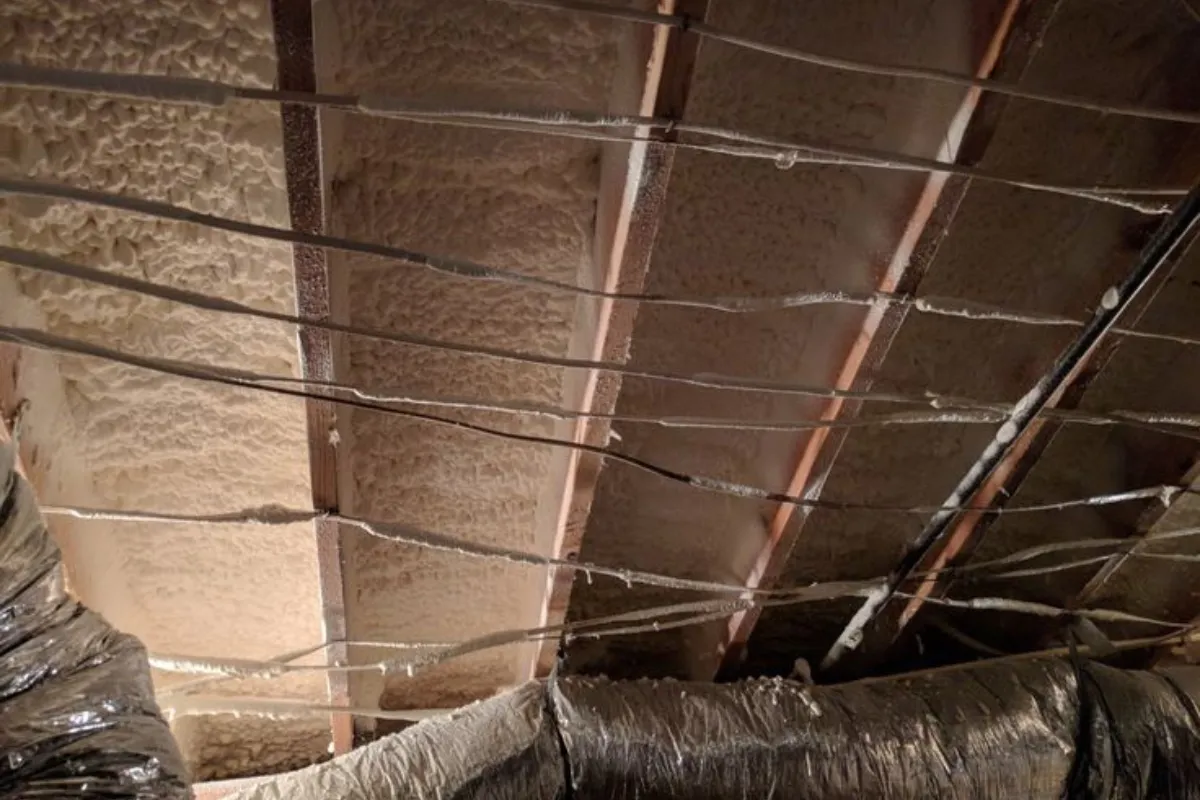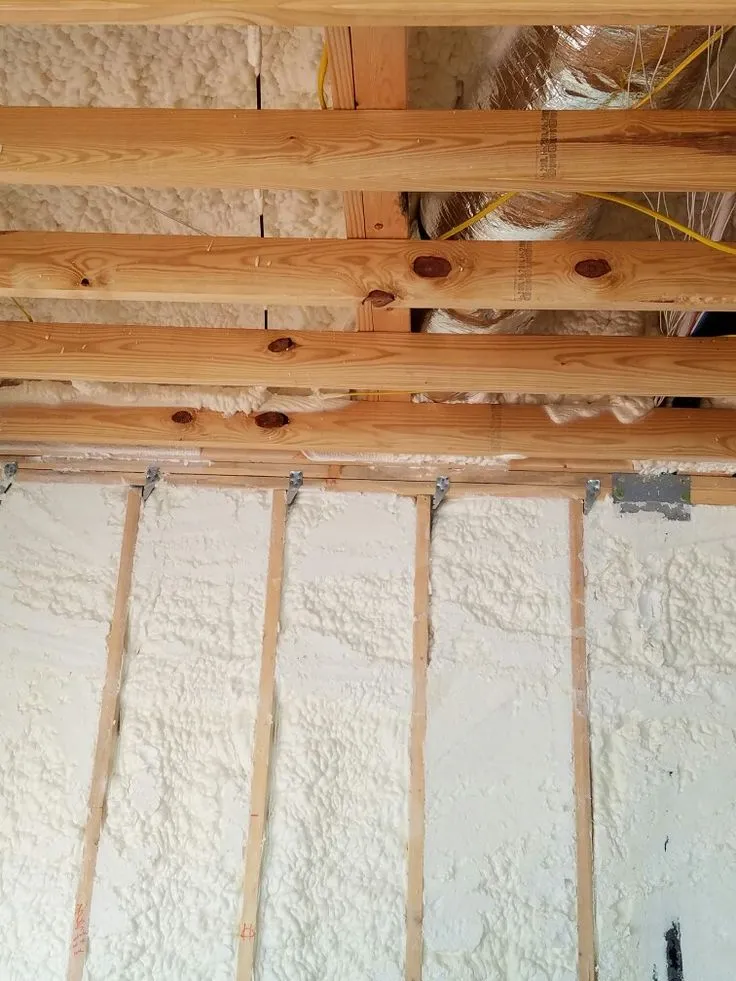
Yes, spray foam insulation works well for the floor above a garage. It fills gaps and creates a tight seal that stops air leaks and keeps heat in during cold months. This method often outperforms traditional fiberglass batts because it sticks directly to the wood and blocks moisture better in damp areas like Seattle.
This article breaks down how spray foam insulation performs in this spot, steps for proper setup, and key factors to weigh. Readers will get clear steps and real-world tips drawn from hands-on work in the Pacific Northwest. Information here comes from direct experience handling installs in rainy, variable climates where garages sit below living spaces.
The floor above a garage faces unique challenges. Cold air rises from below, and drafts sneak through cracks. Spray foam Insulation expands to cover these spots fully. Closed-cell foam, in particular, adds rigidity and resists water, which matters in wet regions.
Open-cell foam offers flexibility and sound dampening but absorbs more moisture. Choose based on the garage’s use—unheated spaces benefit from closed-cell for better thermal breaks. Data from the U.S. Department of Energy shows spray foam can cut energy use by up to 20% in homes with uninsulated floors like these.
Start with a clean, dry surface. Remove any old insulation and check for leaks or rot in joists. Seal large gaps with caulk first.
Apply foam from below using a spray rig. Aim for a 5.5-inch depth between joists for R-21 value, per building codes in Washington State. Work in sections to avoid drips, and let each layer cure before adding more.
After foaming, cover with a thermal barrier like drywall if codes require it—most areas mandate this for fire safety. Total time for a standard two-car garage floor runs about four to six hours for pros.
Bonus Tip: Test air quality post-install. New foam off-gasses slightly, so ventilate the garage well in the first day.
Spray foam stands out for tight spaces, but it has trade-offs. The table below compares it to common alternatives for garage floor insulation.
| Insulation Type | R-Value per Inch | Air Sealing | Moisture Resistance | Cost per Sq Ft (Installed) |
|---|---|---|---|---|
| Closed-Cell Spray Foam | 6.5 | Excellent | High | $1.50 – $2.50 |
| Open-Cell Spray Foam | 3.6 | Good | Moderate | $0.80 – $1.20 |
| Fiberglass Batts | 3.1 | Poor | Low | $0.50 – $1.00 |
| Rigid Foam Boards | 5.0 | Fair | High | $1.00 – $1.80 |
In the context of insulating floors above garages, this setup highlights why spray foam often wins for efficiency. A study by Oak Ridge National Laboratory notes that spray foam reduces heat loss by 50% more than batts in floor applications.
Assess the garage’s condition first. If it’s prone to flooding, closed-cell foam prevents mold growth better. Check local codes—King County requires R-19 minimum for floors over unconditioned spaces.
Budget plays a role. Initial costs run higher, but payback comes through lower heating bills. In Seattle’s mild winters, expect savings of $200-400 yearly on energy, based on Puget Sound Energy reports.
Think about access. Insulating from below avoids disrupting living areas, but tight spots need skilled application to prevent uneven coverage.
Bonus Tip: Pair insulation with weatherstripping on garage doors. This combo seals the whole system and boosts performance by 15%, from field tests in similar climates.
Seattle’s damp weather demands attention to vapor barriers. High humidity can trap moisture in floors, leading to wood decay. Closed-cell spray foam’s density helps here by not wicking water like fiberglass does.
Winter temps dip to 30s°F, so insulation prevents cold floors that feel like ice underfoot. Summer heat rarely spikes, but the seal keeps conditioned air inside. Local builders report fewer condensation issues with spray foam in these setups.
Market data from the Northwest Power and Conservation Council indicates that homes with proper floor insulation save 10-15% on heating costs in the region, where natural gas prices average $1.20 per therm.
Yes, spray foam can cut garage noise by up to 50%, making living spaces above quieter and more comfortable.
DIY kits exist, but professionals recommend full installation. Uneven coverage from DIY jobs can reduce efficiency and leave gaps.
Bonus Tip: Inspect annually for pest entry points. Rodents chew softer insulations, but dense foam deters them better.

Yes, it qualifies when covered by a 1/2-inch gypsum board. This layer meets International Residential Code standards used in Washington. Exposed foam isn’t allowed in habitable spaces.
Closed-cell foam adds structural support to joists, handling typical loads like tools or vehicles. Avoid overloading beyond code limits—consult an engineer for custom setups.
Buyers prioritize energy efficiency. A 2023 report from the National Association of Realtors shows insulated floors add 2-4% to home value in energy-conscious markets like Seattle.
It works if added after the heating system. Foam’s seal prevents heat loss downward, improving efficiency by 25% per manufacturer tests.
The insulation keeps heat out of living areas. In unventilated garages, add fans to circulate air and prevent foam degradation from extreme temps.
Spray foam provides a solid solution for insulating garage floors, sealing air leaks and boosting comfort. In the damp Pacific Northwest, its moisture resistance addresses key challenges like humidity and cold drafts, while following installation steps ensures code compliance. Weigh local climate needs, code requirements, and long-term savings. Homeowners should review their home’s setup, energy use, and goals to decide if this fits. Evaluate options carefully for the best results.
For tailored advice on insulating the floor above a garage, reach out to Cascadia Spray Foam of Seattle. Send an email to [email protected] or call (425) 386-3500 to discuss specifics. Professionals can assess the space and ensure code compliance without hassle. This step helps confirm the right approach for Seattle-area conditions.